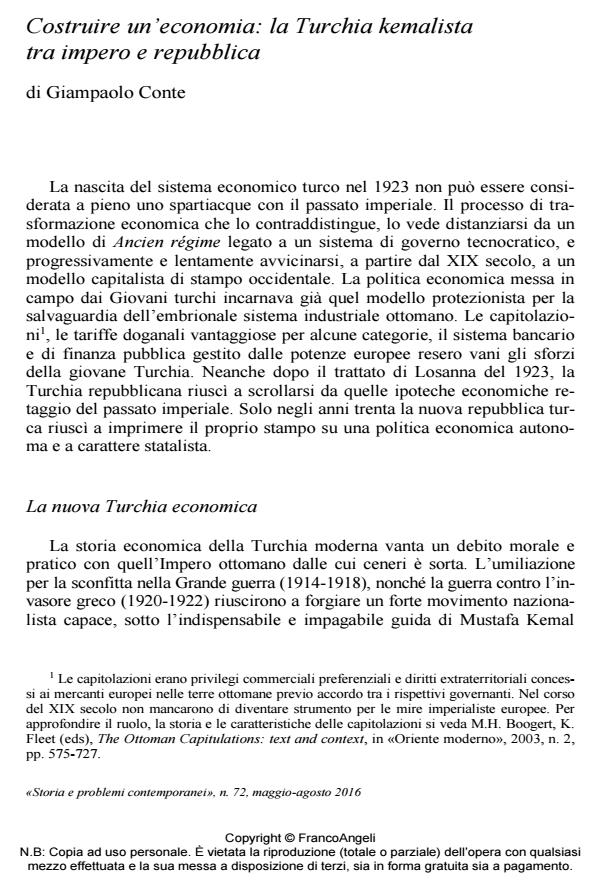Costruire un’economia: la Turchia kemalista tra impero e repubblica
Titolo Rivista STORIA E PROBLEMI CONTEMPORANEI
Autori/Curatori Giampaolo Conte
Anno di pubblicazione 2017 Fascicolo 2016/72
Lingua Italiano Numero pagine 18 P. 29-46 Dimensione file 261 KB
DOI 10.3280/SPC2016-072003
Il DOI è il codice a barre della proprietà intellettuale: per saperne di più
clicca qui
Qui sotto puoi vedere in anteprima la prima pagina di questo articolo.
Se questo articolo ti interessa, lo puoi acquistare (e scaricare in formato pdf) seguendo le facili indicazioni per acquistare il download credit. Acquista Download Credits per scaricare questo Articolo in formato PDF

FrancoAngeli è membro della Publishers International Linking Association, Inc (PILA)associazione indipendente e non profit per facilitare (attraverso i servizi tecnologici implementati da CrossRef.org) l’accesso degli studiosi ai contenuti digitali nelle pubblicazioni professionali e scientifiche
The birth of the Turkish economy system in 1923 can not be considered as a full watershed with the imperial past. The process of this economic change is far from the model of the Ancien Régime, tied to a technocratic administration system. On the contrary, since the nineteenth century, it progressively and slowly approaches to the Western capitalist model. The administration of the Young Turks had already embodied this protectionist model, in order to defend the Ottoman’s embryonic industrial system. However, the capitulations, the advantageous customs taxes for some kinds of products, the banking system and the public finance managed by the European powers, made the efforts of the young Turkey vain. Not even after the Treaty of Lausanne of 1923, the republican Turkey was able to shake off the mortgages inherited by the imperial past. Only during the 1930s the new Turkish republic was able to achieve its independent economic policy with state characteristics.
Giampaolo Conte, Costruire un’economia: la Turchia kemalista tra impero e repubblica in "STORIA E PROBLEMI CONTEMPORANEI" 72/2016, pp 29-46, DOI: 10.3280/SPC2016-072003